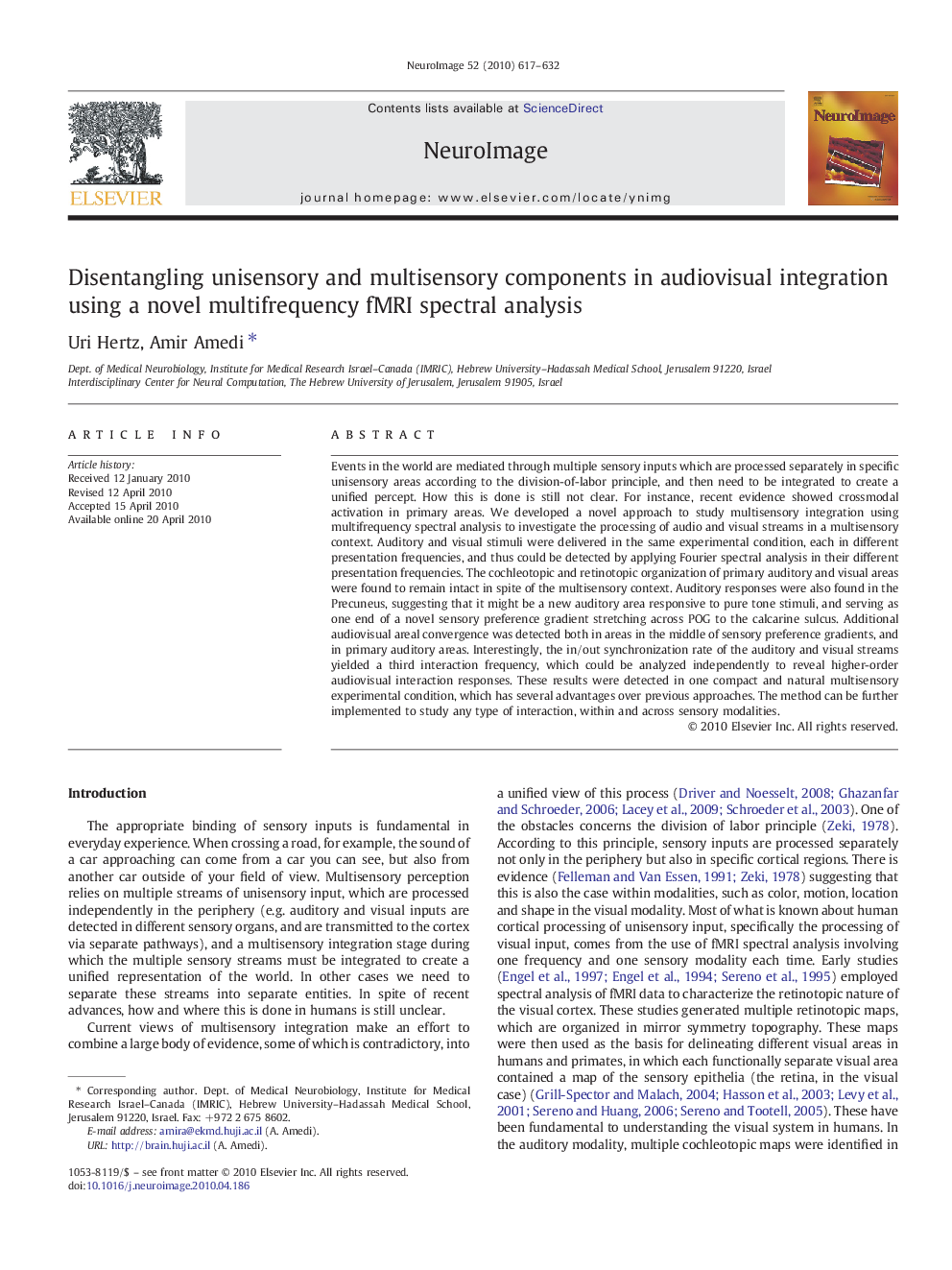| Article ID | Journal | Published Year | Pages | File Type |
|---|---|---|---|---|
| 3072189 | NeuroImage | 2010 | 16 Pages |
Events in the world are mediated through multiple sensory inputs which are processed separately in specific unisensory areas according to the division-of-labor principle, and then need to be integrated to create a unified percept. How this is done is still not clear. For instance, recent evidence showed crossmodal activation in primary areas. We developed a novel approach to study multisensory integration using multifrequency spectral analysis to investigate the processing of audio and visual streams in a multisensory context. Auditory and visual stimuli were delivered in the same experimental condition, each in different presentation frequencies, and thus could be detected by applying Fourier spectral analysis in their different presentation frequencies. The cochleotopic and retinotopic organization of primary auditory and visual areas were found to remain intact in spite of the multisensory context. Auditory responses were also found in the Precuneus, suggesting that it might be a new auditory area responsive to pure tone stimuli, and serving as one end of a novel sensory preference gradient stretching across POG to the calcarine sulcus. Additional audiovisual areal convergence was detected both in areas in the middle of sensory preference gradients, and in primary auditory areas. Interestingly, the in/out synchronization rate of the auditory and visual streams yielded a third interaction frequency, which could be analyzed independently to reveal higher-order audiovisual interaction responses. These results were detected in one compact and natural multisensory experimental condition, which has several advantages over previous approaches. The method can be further implemented to study any type of interaction, within and across sensory modalities.
